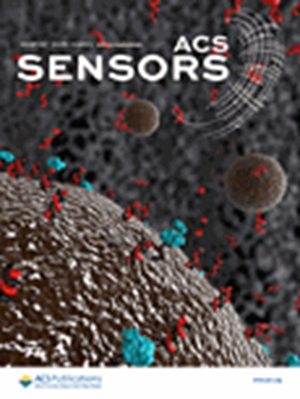Eco-Innovative Papers Integrating Nanostructured Graphenic Films. Toward Sustainable Multifunctional Integrated Sensors.
IF 9.1
1区 化学
Q1 CHEMISTRY, ANALYTICAL
引用次数: 0
Abstract
Laser-induced conductive nanofilm (LIF) electronics have gained increasing attention for their versatility and ability to form high-performing graphenic nanopatterns. Most LIF-graphenic devices are realized on plastic/polymeric substrates, while paper devices rely mainly on graphitization approaches that give rise to fragile and low-performing sensors. Thus, the manufacturing of effective graphene LIF-based paper devices suitable for real applications is still an open issue. Herein, for the first time, laser-induced reduced graphene oxide (rGO) was integrated into different cellulosic substrates to fabricate complete nanostructured paper-based sensors capable of responding to different analytical needs. Different eco-innovative cellulosic substrates were investigated, including recycled papers and papers from textile and agro-industrial wastes and manufactured with fiber alternatives to trees. Paper sensors were serially manufactured via an accessible stencil printing approach, and the rGO film was easily integrated by pressure. The paper/rGO morphological, structural/chemical, and electrical/electrochemical features were deeply investigated. Each type of paper accommodates rGO differently, leading to unique graphene film formation and chemical rearrangements affecting electrochemistry. The latter appears influenced by the paper's ability to preserve the native exfoliated nature of the rGO-film, which is dominated by sp² carbon domains. The multifunctional ability of paper-rGO sensors has been proven in various analytical applications. Reproducible data (RSD ≤ 7%), nano/micromolar limits of detection, and satisfactory recoveries (91-108%) were obtained when working with agri-food, biological, and pharmaceutical samples, proving the exploitability and high performance of paper-rGO sensors. Notably, for each application, a different paper-based sensor resulted in the best performance, proving that the cellulosic substrate directly affects the electrosensing ability.集成纳米结构石墨薄膜的生态创新论文。迈向可持续的多功能集成传感器。
激光诱导导电纳米膜(LIF)电子学因其多功能性和形成高性能石墨纳米图案的能力而受到越来越多的关注。大多数liff石墨器件是在塑料/聚合物基板上实现的,而纸器件主要依赖石墨化方法,这会产生脆弱和低性能的传感器。因此,制造适用于实际应用的有效的石墨烯liff基纸器件仍然是一个悬而未决的问题。本文首次将激光诱导的还原氧化石墨烯(rGO)集成到不同的纤维素基质中,以制造完整的纳米结构纸基传感器,能够响应不同的分析需求。研究了不同的生态创新纤维素基质,包括再生纸和来自纺织和农业工业废料的纸,并使用替代树木的纤维制造。纸张传感器是通过可访问的模板印刷方法批量制造的,并且rGO薄膜很容易通过压力集成。深入研究了氧化石墨烯的形态、结构/化学和电学/电化学特征。每种类型的纸容纳氧化石墨烯的方式不同,导致独特的石墨烯薄膜形成和影响电化学的化学重排。后者似乎受到纸张保持氧化石墨烯薄膜的天然剥离性质的能力的影响,氧化石墨烯薄膜由sp²碳畴主导。纸张氧化石墨烯传感器的多功能能力已在各种分析应用中得到证实。在农业食品、生物和制药样品中获得了可重复性数据(RSD≤7%)、纳米/微摩尔检测限和令人满意的回收率(91-108%),证明了纸质氧化石墨烯传感器的可开发性和高性能。值得注意的是,对于每种应用,不同的纸基传感器产生最佳性能,证明纤维素基质直接影响电传感能力。
本文章由计算机程序翻译,如有差异,请以英文原文为准。
求助全文
约1分钟内获得全文
求助全文
来源期刊

ACS Sensors
Chemical Engineering-Bioengineering
CiteScore
14.50
自引率
3.40%
发文量
372
期刊介绍:
ACS Sensors is a peer-reviewed research journal that focuses on the dissemination of new and original knowledge in the field of sensor science, particularly those that selectively sense chemical or biological species or processes. The journal covers a broad range of topics, including but not limited to biosensors, chemical sensors, gas sensors, intracellular sensors, single molecule sensors, cell chips, and microfluidic devices. It aims to publish articles that address conceptual advances in sensing technology applicable to various types of analytes or application papers that report on the use of existing sensing concepts in new ways or for new analytes.
 求助内容:
求助内容: 应助结果提醒方式:
应助结果提醒方式:


